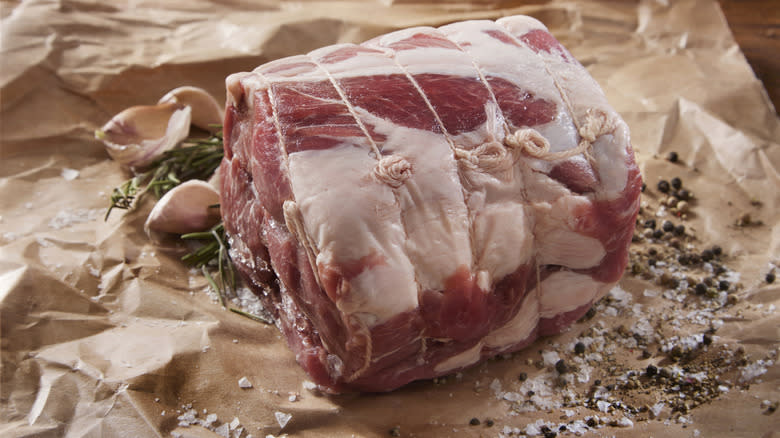The Best Cut Of Meat For Rich Pork Stew

As an avowed trencherman who loves a hearty stew, I have spent countless hours experimenting with various cuts of pork in pursuit of the ultimate rich and flavorful pot of goodness. Though many cuts perform ably, my culinary journey has made one thing abundantly clear: When it comes to creating a truly decadent pork stew, there's no cut quite like the pork shoulder.
The magic lies in the web of fat and connective tissue within the pork shoulder. This cut boasts a rich marbling that not only adds a depth of flavor but also contributes to the luxurious richness and body of the stew. As the pork shoulder simmers, the fat slowly renders, infusing the broth with a savory essence and unparalleled unctuousness. The connective tissue, often overlooked, breaks down during the slow-cooking process, adding a luscious, melt-in-your-mouth texture to the stew.
While other cuts may seem like the right call, few have the total package of attributes of pork shoulder. Despite its name, tenderloin is far too lean for a stew, becoming dry despite the moist environment. Pork belly, on the other hand, is exceedingly fatty and lacks enough connective tissue for the proper consistency. As such, the depth and complexity of taste achieved with pork shoulder stand unparalleled, making it the unequivocal top choice for those seeking a truly satisfying stew.
Read more: Your Guide To The Different Cuts Of Steak
Brown, Braise, And Serve

Regardless of the kind of stew you're making, from a vibrant green chile pork stew to a filling pork burgoo, the key lies in the two-step process: Browning and slow-cooking. Begin by generously seasoning cubed pork shoulder with salt, pepper, and any other seasoning called for or desired. In a hot vessel, sear the pork pieces until they develop a golden-brown crust. This initial step is crucial, as it causes the exterior of the pork to undergo the Maillard reaction that adds layers to the stew ahead.
After achieving the perfect sear, the pork shoulder must be coaxed gently along with a low and slow braise in order to transform from frighteningly tough hunks of meat to fall-apart tender pillows of pork. This is best achieved in the same vessel where the pork was seared, be that a Dutch oven, heavy-bottom pot, or slow cooker, so that the liquid deglazes the fond as it bathes the meat. An important element to keep in mind is that the pork shoulder is likely the longest-cooking ingredient of any stew, so give it a good head start before adding other vegetables and herbs which may be pushed past their prime as the pork gently renders.
Pork shoulder indeed takes time to blossom, but as it bubbles away in a stew perfuming the air before a delicious meal, you will see why it is more than worth the wait. Your reward will be a rich bowl of comfort without equal.
Read the original article on Tasting Table.


